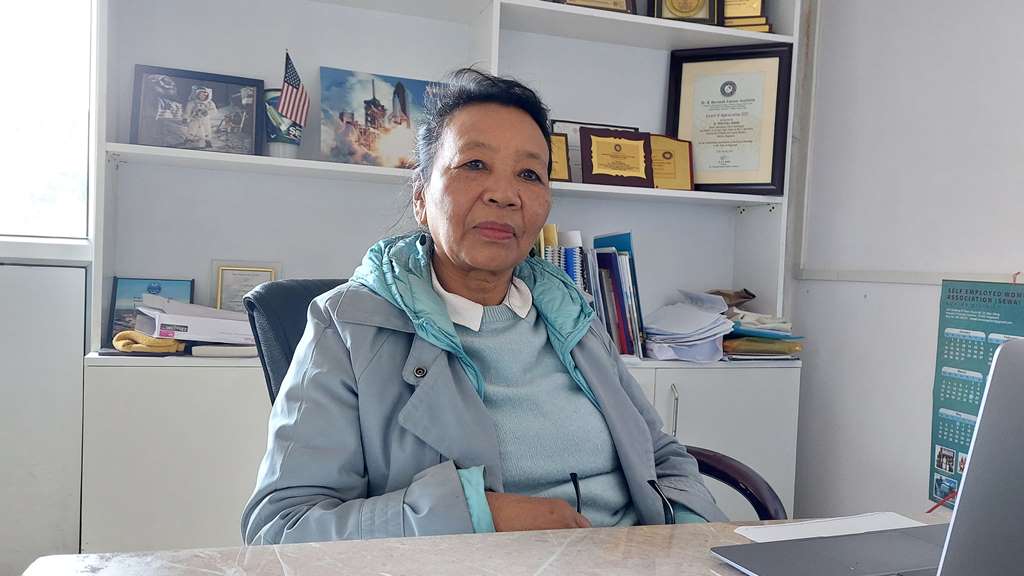FRIDAY, JUNE 06, 2025
- Home
- Nagaland way behind cancer care, time to wake up, says Dr. Vinotsole Khamo
Nagaland way behind cancer care, time to wake up, says Dr. Vinotsole Khamo
Published on Feb 4, 2024
Share

KOHIMA — Sixty-one years after attaining statehood and despite the high rate of cancer, Nagaland still lacks treatment facilities for cancer patients in the government-run hospitals.
Speaking to Eastern Mirror on the eve of World Cancer Day, Dr. Vinotsole (Tina) Khamo, principal investigator for the Population-Based Cancer Registry (PBCR), emphasised the urgent need for cancer treatment facilities in the state, particularly for those in rural areas who face challenges in accessing healthcare due to poor connectivity and low income.
The absence of a government-backed setup for cancer treatment exacerbates the struggles faced by patients, making it imperative for the government and the public to collectively address this pressing issue.
Currently, private hospitals namely Eden Medical Centre, Dimapur, and Christian Institute of Health Sciences and Research (CIHSR), Chümoukedima, remain the primary options for cancer patients to undergo treatment in the state.
Earlier, Dr. B Baruah Cancer Institute in Assam was the main destination for patients from Nagaland who could not afford to travel beyond the North-east for treatment.
Around 700 new cases every year in state
The principal investigator observed that the Northeast region has become the hotspot of cancer in the country, with Nagaland ranking 11th in cancer incidence in the country.
She informed that Nagaland ranks highest in nasopharyngeal cancer, while tobacco-related cancer in the state among male is 39.3 % and 11% among female.
Dr. Khamo also said that around 700 new cancer cases are reported every year in the state and that the death cases due to cancer is about 126 per year.
“So, when you look at this, it is very alarming. We really need to be worried,” she said, while sharing that the risk of developing cancer in one’s lifetime is one in seven among males and one in ten among females.
Nagaland next to China’s Wenzhou in NCP
She said that nasopharyngeal carcinoma (NCP) is the leading cancer in the state, followed by stomach cancer, esophagus cancer and hypopharynx, respectively.
The high prevalence of nasopharyngeal cancer in Nagaland has put the state on top of the nasopharyngeal cancer incidences in the country and second highest in the world, just next to China’s Wenzhou.
“It is really time to wake up!”, she added.
Cancer burden very high with no govt. set-up
Pointing out that cancer is a major health problem in the state, the expert informed that 57% of the cancer patients go outside the state for treatment.
She also informed that 75% of patients from Nagaland are taking treatment in private healthcare facilities outside the state, with 60.7% patients self-financing their own treatment against 10.7% patients covered by health insurance.
In the absence of radiotherapy and other facilities in state-run hospitals, the principal investigator was empathetic of the condition of needy patients from the rural areas who have no option but to go to Dimapur for treatment.
She also highlighted the plight of patients who go outside the state, with long waiting periods in hospitals besides the logistic and food-habit challenges.
Factors and causes of high incidents
The prevalence of tobacco-related cancer is high in the state, owing to the high consumption of smokeless tobacco products by all age groups, both male and female, and the open sale of tobacco products in every nook and corner.
According to the Global Youth Tobacco Survey-4 carried out in Nagaland among 1,919 students (13 to 15 years of age) in 2019 showed that 35% of students use smokeless tobacco.
Besides, the expert also pointed out that high consumption of alcohol and tobacco, predominantly coupled with genetic factors and sedentary lifestyle, are major causes of stomach cancer.
On the genetic aspects relating to cancer, she informed that nasopharyngeal cancer is one such case wherein the genes of the Nagas are prone and susceptible.
Cancer can become a ‘tombstone’
Despite the high prevalence rate of cancer, Dr. Khamo pointed out the lack of concern among the masses as well as the government. By the time the people realise the severity of the disease, it is usually too late and cancer can become a “tombstone,” she said.
She stressed on the need for sensitisation and awareness among the people for early checkup and screening.
However, she also expressed concern about the pre-conceived notion among the people that once detected with cancer then it is a death sentence, and they do not seek treatment but go back to their village.
Towards this, she underscored the need to have a cancer detection centre in the state, along with treatment facility.
Claiming that the sedentary lifestyle has taking a toll on the urban populace, Dr. Khamo emphasised a shift to physical activities and change of food and dietary habits. Also, pointing out that food containing insecticides and pesticides are cancerous, she advised taking organic foods.
Way forward
In the backdrop of the prevailing grim situation and the absence of government treatment facilities in the state, Dr. Khamo implored the need to set up such facilities for diagnosis and treatment, and making use of the trained specialist doctors in the state.
In her opinion, that there are a good number of surgical oncologists, gynecologists, head and neck oncologist, radiotherapist, medical physicists, medical therapists, radiotherapy technicians and palliative doctors who were deputed in various government health units and some working outside the state.
Also read: Nagaland tops in cancer cases

